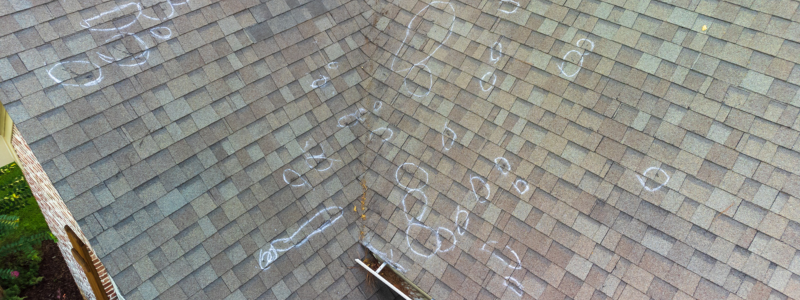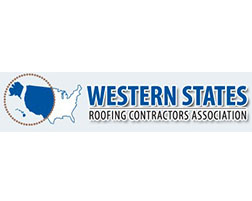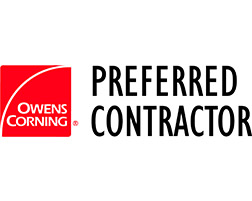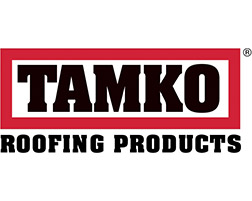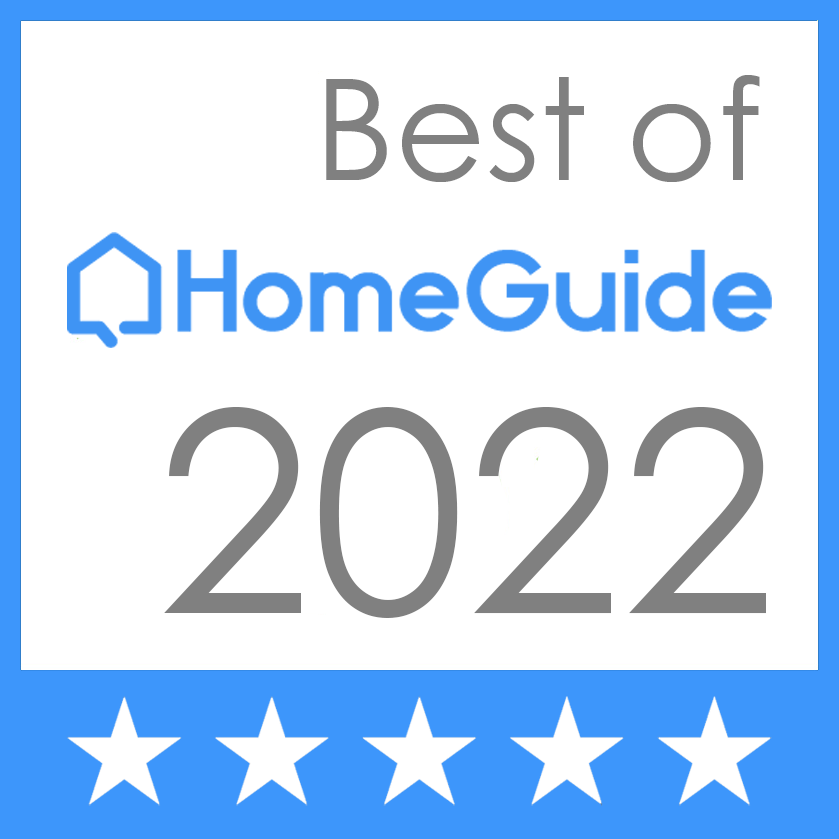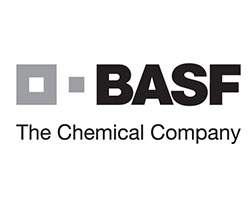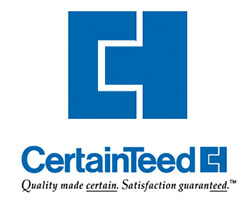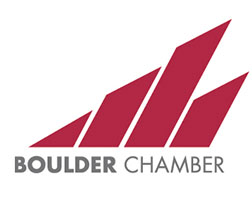How to Fix a Leaking Roof from the Outside
Roof leaks can quickly escalate into serious problems if not addressed in time. Even a small leak can cause water damage, mold growth, and structural deterioration. Knowing how to fix a leaking roof from the outside gives you a critical advantage in minimizing damage and protecting your home.
Whether you’re dealing with a minor shingle issue or a more complex breach in flashing or underlayment, this guide walks you through step-by-step repair strategies. B&M Roofing has been serving Colorado homeowners for over 75 years, and our team knows what it takes to restore a roof safely and effectively.

Signs of a Roof Leak You Can Spot from the Outside
Before attempting any repairs, it’s essential to correctly identify that your roof is leaking and where the issue is originating. Common visual clues from the exterior include:
- Missing or Curled Shingles: Wind, hail, and UV exposure can cause shingles to warp or detach entirely.
- Cracked Flashing or Vent Boots: Flashing protects vulnerable areas like chimneys, valleys, and vents. When flashing fails, water often seeps in.
- Water Stains on Fascia Boards: Look for discoloration beneath the eaves or behind the gutters.
- Pooling Water or Sagging Gutters: Clogged or misaligned gutters can redirect water into the roof structure.
- Moss or Algae Buildup: These growths trap moisture and accelerate roof deterioration.
Regularly inspecting your roof, especially after major storms, is a key step in preventive maintenance.
How to Fix a Leaking Roof from the Outside: Step-by-Step
Once you’ve spotted exterior signs of a leak, it’s time to act. Below is a practical sequence to help you address minor leaks or apply temporary fixes until professional repairs can be made.

Step 1: Locate the Source of the Leak
Start by inspecting the suspected area. Use binoculars from the ground if your roof is steep or inaccessible. Look for:
- Shingles that appear darker, discolored, or warped
- Gaps around chimneys, skylights, and roof vents
- Cracks in flashing or ridges
- Wet spots under eaves or at the roofline
Pro Tip: You can also run a hose over different roof sections while a second person watches inside the attic for drips or moisture.
Step 2: Apply a Temporary Fix
If rain is in the forecast or you can’t complete a full repair immediately, apply a short-term solution to prevent further water intrusion.
- Use a Tarp: Cover the affected roof section with a durable plastic tarp, extending it past the ridge to ensure proper runoff. Secure it with wood strips and nails.
- Apply Roofing Tape or Cement: For small punctures or cracks, roofing tape or a generous application of roofing cement can temporarily seal leaks.
Safety tip: Never attempt roof work in wet, icy, or windy conditions. Always use fall protection and a stable ladder.
Step 3: Replace Damaged Shingles or Flashing
Start replacing the damaged materials once the weather is dry and you can work safely.
How To Replace a Shingle:
- Carefully lift the shingle above the damaged one to expose the nails.
- Remove the nails using a flat pry bar.
- Slide out the damaged shingle.
- Slide in a new shingle of the same type and color.
- Nail it in place and seal with roofing cement.
How To Repair Roof Flashing:
- Remove any cracked or rusted flashing sections.
- Apply roofing cement under the new flashing.
- Secure it with nails and apply an additional bead of sealant along the edges.
Step 4: Clean and Realign Gutters
Clogged gutters can force water to back up under shingles or rot the fascia.
- Remove all debris from gutters and downspouts.
- Ensure that gutters are sloped correctly (typically 1/4 inch per 10 feet toward the downspout).
- Check for leaks at seams and seal them with gutter caulk or sealant.
Step 5: Seal Exposed Fasteners and Roof Penetrations
Roof leaks often originate around exposed nails, vents, and joints.
- Apply roofing sealant or cement to any exposed or corroded fasteners.
- Re-caulk around chimneys, skylights, and vent boots as needed.
- Use a patching kit to cover small holes in shingles or metal panels.

Materials and Tools You’ll Need
To properly fix a leaking roof from the outside, gather the following supplies:
- Replacement shingles
- Roofing nails and hammer
- Roofing cement or sealant
- Flat pry bar and utility knife
- Ladder and safety harness
- Tarp and wood strips (for temporary repairs)
- Caulking gun and roofing caulk
- Gutter scoop or garden trowel
Having the right tools on hand reduces the risk of errors and helps ensure your repair lasts.
When to Call a Professional Roofer
While a handy homeowner can manage some minor leaks, there are several situations where calling a professional like B&M Roofing is strongly recommended:
- You cannot safely access the roof or identify the leak source.
- The leak involves large sections of roofing or structural damage.
- Water is entering your attic or living space.
- There are signs of mold, insulation damage, or ceiling discoloration.
- Your roof is under warranty, and you want to avoid voiding it.
A licensed roofer can provide a thorough inspection and professional-grade repairs and help with insurance documentation if needed.
Why Choose B&M Roofing for Roof Leak Repair
B&M Roofing has built a reputation as one of Colorado’s most trusted roofing contractors by offering reliable solutions backed by expert craftsmanship. When you choose us for your roof repair, you get:
- Experienced roofers trained to detect hidden damage.
- Emergency response for active leaks or storm damage
- High-quality materials and attention to detail
- Long-term protection, not just a quick fix
- Honest guidance about whether to repair or replace
We’ve helped thousands of homeowners across the Front Range secure their homes against hail, snow, and wind. You can count on us to do the job right the first time.

Fix Roof Leaks Fast—Start with a Trusted Roofing Partner
Learning how to fix a leaking roof from the outside empowers homeowners to take quick action, but not all leaks should be handled alone. When safety, quality, and long-term performance matter, trust the professionals at B&M Roofing.
Contact B&M Roofing today for a professional roof inspection or emergency repair assessment. Our expert team will identify the source of the leak, provide transparent recommendations, and get your roof back to peak condition—fast.
Exterior Home Maintenance Checklist
Your home’s exterior is its first line of defense against the elements, and regular upkeep is essential to preserve its structure, efficiency, and value. With Colorado’s dynamic weather patterns, from intense sun and snow to hail and high winds, proactive maintenance becomes even more critical.
This comprehensive exterior home maintenance checklist from B&M Roofing will help you stay ahead of seasonal wear and tear. Whether preparing for spring rains or winter freezes, use this guide to protect your investment year-round.

Why Exterior Maintenance Matters
Neglecting exterior maintenance can lead to serious and costly issues. Damaged shingles, clogged gutters, cracked siding, and deteriorated paint aren’t just cosmetic problems—they can create vulnerabilities that allow water intrusion, mold growth, energy loss, and structural damage.
By following a scheduled exterior maintenance routine, you’ll:
- Extend the lifespan of your roofing, siding, and gutters
- Avoid expensive emergency repairs.
- Improve curb appeal and long-term home value.
- Enhance energy efficiency by sealing drafts and insulation gaps.
At B&M Roofing, we’ve seen firsthand how seasonal maintenance makes a difference. Let’s walk through what your checklist should include.
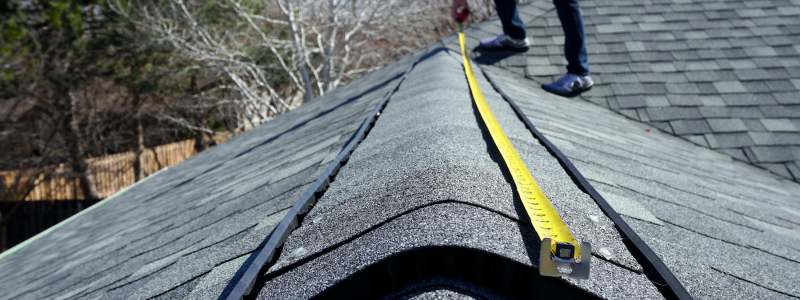
Exterior Home Maintenance Checklist by Season
Colorado’s unique weather, year round, is a challenge to keeping your home’s roof safe. Ensuring your roof is safe throughout each season is as easy as it is important.
Spring Exterior Maintenance Tasks
After months of snow, ice, and wind, spring is the perfect time to assess winter damage and prepare for rain and summer storms.
- Inspect Your Roof: Look for missing or lifted shingles, damaged flashing, and signs of granule loss. Hail and snow accumulation can compromise roofing materials. Schedule a professional roof inspection to ensure structural integrity.
- Clean Gutters and Downspouts: Remove leaves, pine needles, and debris that have accumulated over winter. Make sure water flows freely to prevent overflow and foundation damage.
- Check the Foundation: Look for cracks, shifting, or areas where water pools near the base of your home. These are early signs of foundation stress.
- Wash Siding and Windows: Use a garden hose or low-pressure power washer to remove dirt and mildew. While cleaning, inspect for warped or cracked siding.
- Examine Exterior Paint and Caulking: Peeling paint or deteriorating caulking around windows and doors allows moisture to enter your home. Touch up as needed.
Summer Exterior Maintenance Tasks
With longer days and drier weather, summer is a good time to complete projects that require more time or access to contractors.
- Inspect Attic Ventilation: Ensure vents are clear and attic insulation is dry. Poor airflow can lead to heat buildup and moisture problems.
- Trim Trees and Bushes: Keep vegetation trimmed at least one foot away from your siding and roof to prevent damage from branches and moisture retention.
- Power Wash Driveways, Patios, and Walkways: Remove grime, moss, and slippery algae. This not only enhances appearance but also reduces tripping hazards.
- Repair or Repaint Exterior Surfaces: Hot sun can crack paint and warp wood. Touch up siding, trim, and decks to maintain a protective barrier.
- Check Roof Penetrations: Look around chimneys, vents, and skylights for cracked seals or deteriorated flashing. These are common entry points for water.
Fall Exterior Maintenance Tasks
Fall is all about preparation. Now’s the time to seal gaps, clear gutters again, and protect your home before the freeze.
- Clean Gutters After Leaves Fall: Clogged gutters in the winter lead to ice dams and water backups. Ensure they’re clean and properly sloped.
- Inspect Roofing Materials Again: Check for signs of damage before snow and ice settle in. Fall inspections help catch minor issues before they become cold-weather emergencies.
- Seal Driveway Cracks: Water that seeps into small cracks can freeze and expand, worsening the damage. Seal and patch early.
- Store Outdoor Furniture and Equipment: Protect patio furniture, garden tools, and grills from winter exposure by storing or covering them properly.
- Weatherproof Doors and Windows: Replace worn-out weather stripping and re-caulk gaps to improve heat retention and reduce energy costs.
Winter Exterior Maintenance Tasks
Even in winter, maintenance steps are necessary to prevent damage and identify problems early.
- Remove Snow and Ice Buildup: Heavy snow or ice dams can damage gutters, loosen shingles, or collapse weak roof areas. Use a roof rake safely or hire a professional.
- Watch for Ice Dams and Icicles: Persistent icicles may signal poor insulation or blocked drainage. These can lead to water seepage under shingles.
- Monitor the Attic for Moisture: Check the attic for signs of condensation, frost, or leaks. These may indicate ventilation issues.
- Ensure Gutters Drain Properly: Melting snow must have a clear exit path. Blocked gutters refreeze and cause dangerous ice formations.
- Inspect for Animal Entry Points: Mice, birds, and squirrels may try to enter attics or crawlspaces during cold months—seal gaps around vents and eaves.

Focus on Roof & Gutter Maintenance
Your roof and gutters are two of the most critical and vulnerable parts of your home’s exterior. Regular maintenance helps prevent severe water damage, especially during Colorado’s unpredictable seasons.
- Roof Maintenance Tips: Inspect twice yearly (spring and fall), after major storms, and before snowfall. Look for soft spots, missing shingles, or damaged flashing.
- Gutter Maintenance Tips: Clean at least twice yearly and ensure downspouts drain away from the foundation. Install guards to reduce debris buildup.
B&M Roofing provides professional inspections and repairs to ensure your roofing system stays in top condition.
Tips for Staying on Track with Maintenance
- Use a Seasonal Checklist: Reference this article each season to stay on track.
- Schedule Recurring Inspections: Work with a trusted contractor like B&M Roofing to assess the roof and exterior elements annually.
- Keep a Home Maintenance Log: Note the date and scope of each task for future reference or resale value.
How B&M Roofing Can Help
With over 75 years of experience, B&M Roofing has become a trusted resource for homeowners throughout Colorado. While we’re renowned for high-quality roofing, we also provide expert services and consultations that support your home’s entire exterior, from gutter systems to storm damage assessments.
- Professional roof inspections and maintenance
- Gutter replacement and repairs
- Storm response and insurance support
- Honest recommendations from a team you can trust
Whether dealing with seasonal damage or planning, B&M Roofing is your partner in long-term home care.
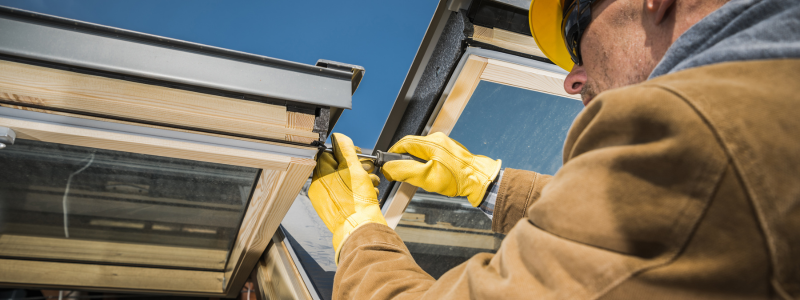
Schedule a Roof Inspection or Maintenance Consultation Today
A consistent exterior home maintenance checklist helps prevent expensive damage and ensures your home is ready for every season. A little attention goes a long way from your roof to your foundation.
Contact B&M Roofing today to schedule a roof inspection or learn more about our complete exterior services. Stay protected. Stay proactive.
How Do I Know If My Roof Has Hail Damage?
Hailstorms can cause significant damage to your roof, but spotting the signs isn’t always easy. Even small hailstones can weaken shingles, compromise your home’s structural integrity, and lead to costly repairs if left unchecked. If you’re wondering, “How do I know if my roof has hail damage?” this guide will walk you through the key signs to look for, how to inspect your roof safely, and when to call a professional for an assessment.

Signs of Hail Damage on Your Roof
Hail damage can vary based on the storm’s severity, the size of the hail, and your roofing materials. Below are the most common indicators that your roof has been impacted by hail:
Visible Exterior Damage
Hail can inflict significant damage to roofing shingles, leading to various issues that compromise the integrity of your roof. Dented or cracked shingles often result from hail, creating small impact craters and fractures that can break sections of the material. If you observe an unusual amount of granules collecting in your gutters or downspouts, this could indicate granule loss on asphalt shingles, signaling that your roofing may be weakened and less effective at protecting your home.
The combination of missing granules and cracked shingles can also expose the underlying protective underlayment, making your roof vulnerable to potential leaks and further water damage. It’s crucial to regularly inspect your roof for these signs of wear to ensure its continued durability and safeguard your home from the elements.
Damage to Metal Roof Components
- Dents in Gutters, Downspouts, and Flashing: If you see visible dents in these areas, your shingles may also be damaged.
- Deformations on Metal Panels: Metal roofing can suffer dents and warping from heavy hail impacts, affecting its durability and lifespan.
Water Leaks & Interior Signs of Damage
- Water Stains on Ceilings and Walls: Discoloration or stains inside your home can signal a leaky roof.
- Mold Growth Due to Hidden Leaks: Hail damage can create tiny cracks that allow moisture to seep in, leading to mold and mildew.
- Peeling Paint or Bubbling Drywall: Moisture intrusion from hail damage may cause paint to peel or drywall to bulge.

How to Inspect Your Roof for Hail Damage
If your area recently experienced a hailstorm, inspecting your roof for damage is crucial. Here’s how you can do it safely:
Safety Precautions Before Inspecting
When inspecting your roof, it’s wise to start from the ground using binoculars. This allows you to examine the condition without the risks associated with climbing up. If you notice any damage, avoid walking on unstable shingles, which can lead to accidents. Always prioritize your safety during such inspections.
Using a Professional Roof Inspection
While a visual inspection can reveal some damage, a professional assessment can uncover hidden issues:
- Infrared Scans & Moisture Detection: Experts use advanced tools to find leaks and weak spots.
- Structural Integrity Analysis: A professional inspection ensures your roof remains stable and secure.
- Comprehensive Damage Reports for Insurance Claims: Roofing experts provide detailed reports that help with insurance claims.

What to Do If You Find Hail Damage
If you discover hail damage on your roof, acting promptly to prevent further issues is crucial. Start by assessing the severity of the damage: minor dents may not require immediate attention, but missing shingles or leaks should be addressed immediately. Document the damage with clear photos, then schedule an inspection with a roofing professional for a comprehensive assessment. If repairs are needed, don’t forget to file a homeowners insurance claim as soon as possible, as many insurers have time limits for hail damage claims. Taking these steps will help ensure your roof is restored effectively and efficiently.
Assessing the Severity of the Damage
Not its hail damage requires immediate repairs, but it’s essential to determine the severity:
- Minor Damage: Small dents or slight granule loss may not need urgent attention.
- Severe Damage: Missing shingles, leaks, or structural issues require immediate repairs.
For severe damage and leaks, request a repair estimate from us!
Filing a Homeowners Insurance Claim
If hail has damaged your roof, follow these steps to streamline your indolence claim:
- Document the Damage: Take clear and detailed photos of all affected areas. Capture images from different angles to showcase the extent of the damage. Ensure you also photograph nearby objects that may help illustrate the impact, such as damaged vegetation or nearby structures. Additionally, consider taking notes on what you see, including the hailstones’ size, as this information may be valuable for your insurance claim.
- Schedule an Inspection with B&M Roofing: Contact B&M Roofing to arrange a professional inspection of your property. Our team of experts will assess the damage and thoroughly evaluate your roof and any other impacted areas. We will document all findings with comprehensive reports and detailed photographs, which will be essential for your insurance claim. Our experience dealing with insurance companies will ensure you receive the necessary documentation to support your case.
- File Your Claim Promptly: After documenting the damage and scheduling an inspection, filing your insurance claim as soon as possible is crucial. Most insurance companies set a time limit for filing claims related to hail damage, so acting quickly is vital to securing your coverage. Review your policy to understand the specific timelines and requirements. Gather all necessary documentation, including the assessment from B&M Roofing, to streamline the claims process and improve the chance of a successful resolution.
Why Choose B&M Roofing for Hailit’sage Repair?
B&M Roofing has been a trusted name in roofing services for over 75 years. Here’s why homeowners choose us for hail damage repair:
- Licensed & Insured Roofing Specialists: Our team meets all industry standards for safety and quality.
- Expert Hail Damage Assessments: We provide professional inspections to detect minor damage.
- Seamless Insurance Assistance: We work directly with insurance companies to make your claims process stress-free.
- Durable Repairs & Quality Craftsmanship: Our repairs are designed to extend the life of your roof and enhance its protection.
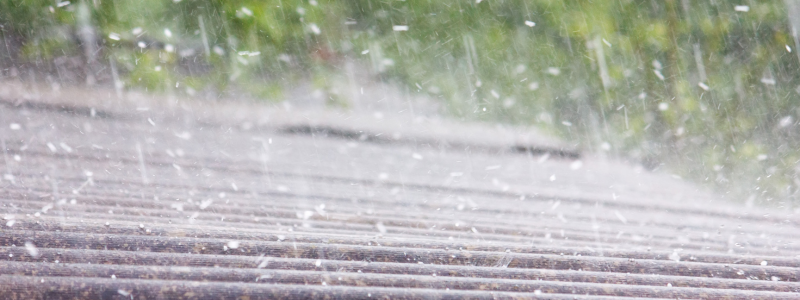
Schedule Your Roof Inspection Today!
At B&M Roofing, we understand that hail damage can lead to significant problems if not addressed promptly. If you suspect your roof has been impacted, don’t wait for minor issues to escalate into expensive repairs. Our experienced team is ready to thoroughly inspect your roof and offer expert recommendations to protect your home.
Contact us today or request a free inspection online—we’re here to help!
Longest Lasting Roofing Shingles
At B&M Roofing, we understand that durability is crucial when selecting roofing materials. Our impact-resistant shingles deliver exceptional protection against severe weather conditions, ensuring your home remains safe and secure. Our long-lasting roof shingles are designed to provide homeowners with decades of reliability and peace of mind.
In this guide, we’ll explore the unique features of impact-resistant shingles, highlight their advantages, and share our top recommendations for roofing materials with the most extended lifespan. You can trust B&M Roofing to help you make informed choices for your roofing needs.

What Are Impact Resistant Shingles?
Impact-resistant shingles are designed to withstand hail, debris, and strong winds better than traditional asphalt shingles. They are engineered with advanced materials that help prevent cracking and breaking upon impact, helping them be some of the longest-lasting roofing shingles.
How Are They Different from Standard Shingles?
The primary difference between impact-resistant and standard shingles is their composition and durability. Traditional shingles often crack or lose granules when hail strikes, whereas impact-resistant shingles flex and absorb the impact, reducing damage.
How Are Impact Resistant Shingles Rated?
Impact-resistant shingles are tested using the UL 2218 Class Rating System, which determines their ability to resist damage from hail and other debris.
- Class 1 & 2: Basic resistance to minor impacts.
- Class 3: Improved durability against medium-sized hail.
- Class 4: Highest impact resistance, capable of withstanding hailstones up to 2 inches in diameter.
In Colorado, we recommend either Class 3 or Class 4 shingles, due to the increased frequency of hail. These impact-resistant shingles are some of the longest lasting roofing shingles you can buy for your home.
Benefits of Impact-Resistant Shingles
When it comes to safeguarding your home from the unpredictable forces of nature, choosing the right roofing material can make all the difference. Impact-resistant roofing offers superior protection against hail and storms by significantly reducing the risk of leaks and minimizing the potential for costly repairs. These specialized shingles have been engineered for enhanced durability, often outlasting standard asphalt shingles, contributing to a longer lifespan for your roof. In addition to the immediate benefits of increased resilience, many homeowners may also enjoy potential insurance discounts, as numerous insurers recognize the value of impact-resistant roofing and offer lower premiums.
Investing in a stronger, more durable roof provides peace of mind and enhances the overall value of your property, making it a smart choice for those looking to increase their home’s resale value in the future. Our expert roofing services can ensure your roof’s safety throughout the years!

Longest Lasting Roof Shingles: Which Ones Offer the Best Durability?
If investing in a new roof, you want materials that will last for decades. Here’s how the most common roofing shingles compare in lifespan and durability.
Asphalt Shingles (Lifespan: 20-50 years)
The most common and affordable option for roofing materials is often asphalt shingles. These shingles are favored for their cost-effectiveness and ease of installation, making them popular among homeowners. They are also available in impact-resistant varieties, providing extra durability against harsh weather conditions, such as hail or falling debris. However, it’s essential to know that asphalt shingles can be prone to granule loss and wear over time, which may affect their performance and appearance. Regular maintenance and inspections can mitigate these issues and extend the roof’s lifespan.
Metal Roofing Shingles (Lifespan: 40-70 years)
Products that are extraordinarily durable and impact-resistant offer a remarkable level of protection against various environmental factors. They are specifically designed to withstand fire, wind, and UV exposure, making them an ideal choice for those needing reliable performance and longevity. While these products may have a higher initial cost, their benefits far outweigh the investment, as they typically require lower long-term maintenance, ultimately leading to savings over time. By choosing materials that prioritize durability and resilience, individuals and businesses can ensure that their investments stand the test of time, providing peace of mind for years to come.
Slate & Tile Shingles (Lifespan: 50-100 years)
Natural stone and clay materials are renowned for their durability and longevity, often lasting for generations without significant degradation. Their impressive resistance to weather elements and fire makes them an ideal choice for construction in various climates, providing homeowners with peace of mind about the safety and stability of their structures. However, it is essential to note that the heavy weight of these materials necessitates a robust roof structure to support them effectively. This requirement highlights the need for careful planning and consideration during the design phase to ensure that the building can accommodate the substantial load while maintaining structural integrity and aesthetic appeal.
Factors That Affect the Longevity of Roof Shingles
Even the best roofing shingles need proper care to reach their entire lifespan. Here are the key factors that impact their durability:
Installation Quality
Proper installation is essential for long-lasting roofing shingle performance. Poorly installed shingles are more likely to curl, crack, or leak. B&M Roofing ensures that every shingle is installed with precision and expertise.
Regular Maintenance & Inspections
Routine roof inspections help catch minor issues before they become expensive repairs. Homeowners should:
- Clear gutters and downspouts to prevent water buildup.
- Check for loose or missing shingles after storms.
- Schedule a professional inspection at least once a year.
Weather & Environmental Exposure
Roofs in hail-prone areas (like Colorado) benefit from impact-resistant shingles to prevent damage. In hot climates, UV-resistant shingles help reduce sun damage and extend roof life.
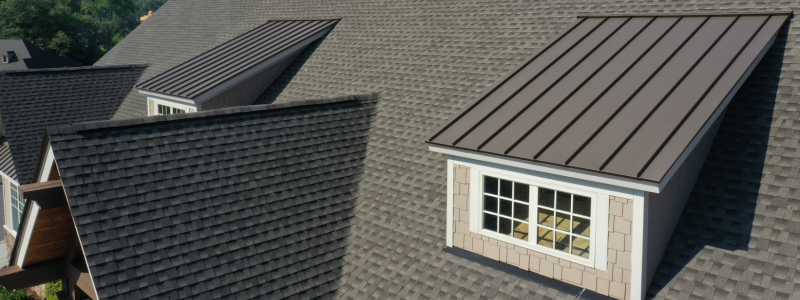
Choosing the Best Impact-Resistant & Long-Lasting Shingles for Your Home
When selecting shingles for durability and weather resistance, consider these factors:
Top-Rated Impact Resistant Shingle Brands
- Owens Corning Duration Storm: Class 4 impact-resistant asphalt shingles.
- GAF Timberline ArmorShield II: Reinforced asphalt shingles for storm protection.
- CertainTeed Landmark IR: High-quality, impact-resistant composite shingles.
- Malarkey Legacy: Rubberized asphalt shingles for extreme durability.
Cost vs. Durability: Is It Worth the Investment?
Impact-resistant shingles generally come with a 10-20% price increase compared to standard shingles; however, they provide several valuable benefits. These shingles lead to fewer repairs over time, resulting in more significant long-term savings. Additionally, homeowners may enjoy lower insurance premiums due to the enhanced durability and protection these shingles offer, ultimately contributing to a longer-lasting roof.
How B&M Roofing Can Help
At B&M Roofing, we install high-quality, impact-resistant, and long-lasting shingles across the state of Colorado. Our experienced team can help you choose the best roofing materials for your home and budget!

Get Expert Roofing Solutions from B&M Roofing!
Enhancing your home with impact-resistant or durable shingles can protect you for years. Whether you’re considering hail-resistant asphalt shingles or robust metal roofing, B&M Roofing has the specialized knowledge to assist you.
Contact us today for a complimentary roof inspection and estimate!
How to Protect Your Roof from Hail: A Complete Guide
Hailstorms can cause significant damage to roofs, leading to costly repairs or even full replacements. Whether you’re a homeowner or a business owner, taking proactive steps can help minimize the risk of hail damage and extend the lifespan of your roof, especially in the state of Colorado, one of the most hail-prone areas in the country. This guide will discuss protecting your roof from hail, including preventative measures, impact-resistant materials, and what to do after a storm.

Understanding Hail Damage and Its Impact on Roofs
Hail damage varies depending on hailstones’ size, density, and speed. Even small hailstones can cause significant damage if hit with enough force. Some common effects of hail damage include:
- Cracked or missing shingles
- Dents and punctures in metal or asphalt roofs
- Weakened structural integrity, leading to leaks and water damage
- Damage to flashing, gutters, and vents
The severity of hail damage also depends on your roofing material. While some materials withstand hail better, no roof is immune to damage.
Choosing Impact-Resistant Roofing Materials
Investing in impact-resistant materials can significantly reduce the risk of hail damage, offering property owners protection and peace of mind. These materials, designed to withstand severe weather conditions, can save you from costly repairs and maintenance. Some of the best options include impact-resistant roofing shingles, reinforced windows, and durable siding. These resilient materials will enhance your home’s longevity and increase its value over time. Our expert team of roofing experts are here to help guide you through the process of re-roofing your home.
Impact-Resistant Shingles (Class 4 Rated)
- Asphalt shingles with a Class 4 impact resistance rating provide better durability against hail.
- They are designed to withstand substantial impacts without cracking or losing granules.
Metal Roofing
- Metal roofs are highly durable and resist hail damage better than asphalt shingles.
- While they may dent under extreme hail conditions, they rarely puncture or crack.
Tile and Slate Roofing
- Clay and slate tiles offer good protection but can crack under large hailstones.
- Consider synthetic tile alternatives for better impact resistance.
Rubber and Composite Roofing
- Rubberized roofing materials can absorb the impact of hailstones without sustaining significant damage.
- These materials are flexible and less likely to crack or break.

Reinforcing Your Roof Against Hail Damage
Beyond choosing the right materials, reinforcing your roof structure can provide protection. This added support helps to withstand extreme weather conditions, such as heavy winds and snow loads. A well-reinforced roof can extend the lifespan of your home and reduce potential repair costs in the long run.
Upgrade Your Roof Decking
- A more substantial roof deck minimizes the risk of hail penetrating your home’s interior.
- Consider impact-resistant oriented strand board (OSB) or plywood sheathing.
Improve Underlayment Protection
- High-quality synthetic underlayment provides an extra layer of defense against leaks.
- Impact-resistant roof membranes should be considered to absorb hail impact.
Ensure Proper Attic Ventilation
- Good ventilation helps reduce temperature fluctuations, preventing your roofing materials from becoming brittle.
- A well-ventilated attic can help extend the life of your roof.
Installing Protective Roofing Accessories
Additional protective measures can enhance your roof’s resistance to hail damage. For instance, installing impact-resistant roofing materials, such as metal or reinforced shingles, can significantly reduce the risk of damage during severe weather. Also, maintaining proper drainage and keeping gutters clean can help mitigate the effects of heavy rain that often accompanies hailstorms.
Hail-Resistant Roof Coatings
- Special coatings add a protective layer to shingles and metal roofing, absorbing impact energy.
Roof Guards and Impact-Resistant Membranes
- These materials help absorb shock from hailstones and reduce direct damage to shingles.
Gutter Protection Systems
- Hail can clog and damage gutters, leading to water pooling on your roof.
- Install gutter guards to prevent debris buildup and improve water drainage.
Preventative Maintenance to Minimize Hail Damage
Routine maintenance can help identify and address potential vulnerabilities before a hailstorm hits.
Schedule Regular Roof Inspections
- Professional roof inspections identify weak spots and recommend necessary repairs.
- Aim for at least one inspection per year, especially before storm season.
Trim Overhanging Branches
- Trees near your home can cause additional damage when hail knocks branches onto your roof.
Clean Gutters and Downspouts
- Keeping gutters clear prevents water buildup, reducing the risk of leaks after a hailstorm.
What to Do After a Hailstorm
Taking prompt and decisive action can significantly reduce the risk of additional damage if a hailstorm hits your region. Assess the situation carefully and identify any vulnerable areas on your property, such as windows, doors, and roofs. Cover these with protective materials like tarps or plywood to shield them from the relentless hail. Move vehicles into a garage or under a sturdy structure to prevent denting and other potential damage. Also, consider checking on your neighbors, especially those needing assistance. Proactive measures safeguard your property and foster a sense of community during extreme weather events.
Inspect Your Roof for Visible Damage
- Look for dents, cracks, or missing shingles.
- Check your attic for signs of leaks or water damage.
Document the Damage
- Take clear photos of any damage for insurance purposes.
- Keep records of any repair estimates and invoices.
Contact a Professional Roofing Contractor
- A licensed roofing contractor can assess the damage and recommend repairs.
- Avoid DIY fixes that could worsen the problem.
Working with Insurance for Hail Damage Claims
After assessing the damage, it’s crucial to document everything thoroughly and contact your insurance company to start the claims process for hail damage, providing them with clear evidence and any necessary documentation to support your case.
Review Your Homeowner’s Insurance Policy
- Understand your coverage for hail-related roof damage.
- Check if you have actual cash value (ACV) or replacement cost value (RCV) coverage.
File a Claim Promptly
- Many insurance policies have time limits for filing hail damage claims.
- Provide detailed documentation and work with a trusted contractor to ensure accurate estimates.
Choose a Reliable Roofing Contractor
- Work with a licensed, experienced roofing company like B&M Roofing to ensure high-quality repairs.
- Avoid storm-chasing contractors who appear after major hailstorms and offer low-cost repairs with subpar materials.

Get Started With B&M Roofing Today!
Hailstorms can seriously threaten your roof, but proactive preparation and proper materials can minimize damage. The best ways to protect your roof from hail are to invest in impact-resistant roofing, reinforce your roof structure, and maintain routine inspections.
If your roof has suffered hail damage or you want to upgrade to hail-resistant materials, contact B&M Roofing today for expert advice and professional roofing services. Our expert team is here to help protect your home or business from the elements.
Hail Damage Roof Repair Cost
Hailstorms can cause significant damage to your roof, leading to costly repairs or even full replacements if left unaddressed. Understanding hail damage roof repair costs is essential for homeowners looking to protect their property and budget accordingly. At B&M Roofing, we specialize in high-quality roof repair and replacement services, ensuring your home remains safe and durable after a storm. In this guide, we’ll break down the factors that affect hail damage repair costs, insurance considerations, and how our team can help restore your roof.

How Hail Damages Your Roof
Hail impacts different roofing materials in various ways. Some common signs of hail damage include:
- Dented or cracked shingles – Asphalt shingles may develop small dents or cracks, weakening their durability.
- Granule loss – Hail can strip protective granules off shingles, reducing their lifespan.
- Leaks and water damage – Hail impact can create punctures that allow water to seep through, causing interior damage.
- Damaged flashing or gutters – Metal components may suffer dents, reducing their ability to divert water.
Scheduling a professional roof inspection after a hailstorm can help determine the severity of the damage and whether repairs or a full replacement are needed.
Factors That Affect Hail Damage Roof Repair Cost
1. Extent of Damage
Minor hail damage may require small patch repairs, while more severe cases might necessitate a full roof replacement. The greater the damage, the higher the cost.
2. Roof Size and Material
Larger roofs naturally cost more to repair due to increased material and labor requirements. Additionally, costs vary based on roofing material:
- Asphalt shingles – Most common and affordable ($5,000 – $15,000 for full replacement).
- Metal roofs – Durable but more expensive ($10,000 – $30,000).
- Tile/slate roofs< – Premium materials with high costs but excellent longevity.
3. Labor and Contractor Fees
Professional roofing services include inspection, labor, and materials. Emergency repairs may cost more due to immediate service demands.
4. Location and Climate Considerations
Regions with frequent hailstorms, like Colorado, often see higher repair costs due to increased demand. Additionally, local building codes and permit requirements can influence overall pricing.
5. Insurance Coverage for Hail Damage
Most homeowner’s insurance policies cover hail damage, but coverage varies based on policy details. Important considerations include:
- Understanding your deductible and out-of-pocket costs.
- Filing a claim with documented roof damage.
- Working with insurance adjusters to maximize coverage.

Average Cost of Hail Damage Roof Repair
While prices fluctuate based on the factors above, here’s a general breakdown:
Minor Repairs
- Patching small sections of shingles: $200 – $1,000
- Fixing minor leaks and flashing: $500 – $1,500
Moderate Repairs
- Replacing damaged shingles: $1,000 – $3,500
- Addressing minor structural issues from water damage.
Full Roof Replacement
- Asphalt shingles: $5,000 – $15,000
- Metal roofing: $10,000 – $30,000
- Tile/slate roofs: Higher-end pricing due to materials and labor
These estimates can vary based on location and contractor rates. Contacting B&M Roofing for a personalized quote ensures the most accurate assessment for your specific needs.

How B&M Roofing Can Help with Hail Damage Repairs
At B&M Roofing, we provide top-tier hail damage repair and replacement services. Our expert team ensures:
- Comprehensive inspections – Identifying hidden damage insurance adjusters may miss.
- Quality craftsmanship – Using durable materials to withstand future storms.
- Insurance claim assistance – Helping homeowners navigate the claims process efficiently.
- Emergency services – Rapid response to prevent further damage.
Our experienced contractors ensure your roof is restored to its best condition, giving you peace of mind after a hailstorm.
Steps to Take After a Hailstorm
- Inspect Your Roof Safely – Check for visible damage from the ground.
- Schedule a Professional Inspection – Let experts assess damage severity.
- Document the Damage – Take photos for insurance claims.
- Contact Your Insurance Provider – Start the claims process promptly.
- Schedule Repairs with B&M Roofing – Prevent further structural issues by addressing repairs early.
Preventing Future Hail Damage
- Invest in impact-resistant roofing – Materials rated for hail impact can reduce future damage.
- Schedule regular roof maintenance – Catching minor issues early prevents costly repairs later.
- Ensure proper attic ventilation – Helps prevent heat buildup that can weaken shingles.

Get Started With Hail Damage Repairs Today!
Hail damage can compromise your roof’s integrity, leading to costly repairs if left unattended. Understanding hail damage roof repair costs and working with a trusted roofing contractor like B&M Roofing ensures a smooth recovery process.
Need an inspection or estimate? Contact B&M Roofing today for a free consultation and let us restore your roof to peak condition!
Common Roofing Problems and How to Fix Them
Maintaining a robust and reliable roof is essential for safeguarding your home against the elements. Over time, various issues can compromise the integrity of your roofing system, leading to potential damage and costly repairs. This comprehensive guide explores common roofing problems and provides practical solutions to address them effectively.

How to Fix Common Roofing Problems
When it comes to roof maintenance, identifying common roofing problems is crucial for protecting your home. Addressing roofing problems quickly after they are discovered is essential to prevent minor issues from escalating into significant repairs. Regular inspections and maintenance are vital to addressing issues before they turn into costly repairs. From leaks to damaged shingles, understanding how to tackle these common roofing problems can save homeowners time and money while ensuring the integrity of their roofs.
By understanding these issues, you can enhance the resilience and longevity of your roof while ensuring a safe and comfortable living environment.
How To Fix Leaky Roofs
Leaky roofs are a prevalent problem for homeowners, compromising a home’s integrity. Damaged shingles typically cause them, cracked flashing, or clogged gutters; harsh weather conditions can exacerbate these vulnerabilities. Telltale signs such as water stains on ceilings, damp walls, or mold growth indicate moisture infiltration, which, if not addressed swiftly, can lead to extensive water damage. To fix a leaky roof, begin by identifying the source of the leak through a thorough inspection. Once the issue is pinpointed, replace any damaged materials and apply an appropriate roofing sealant to seal leaks effectively. For comprehensive repair and peace of mind, it’s wise to consider engaging a professional roofer like us who can provide expert emergency roofing solutions to prevent future leaks and safeguard against severe structural damage.
Damaged or Missing Shingles
Damaged or missing shingles can expose your roof to additional harm, usually from severe weather, aging, or improper installation. Signs of damage include curling, cracking, or noticeable shingle gaps. To maintain your roof’s structural integrity, it’s crucial to address these issues regularly. If you discover any problems, replace individual shingles, ensuring they are correctly aligned and sealed. Regular inspections, particularly after storms, can help you catch these problems early and maintain the protection your roof provides, ultimately preventing more extensive damage.
Clogged or Defective Gutters
Gutters play a vital role in roof drainage, and significant issues can arise when they become clogged with debris like leaves and twigs. Improper installation can also lead to overflow, impacting the roof and your home’s foundation. Signs of clogged gutters include overflowing water, sagging gutters, and pooling water around the foundation. To maintain roof health, it’s essential to regularly clean your gutters to remove debris and ensure adequate water flow, which helps prevent clogs. Installing gutter guards can enhance protection against blockages while ensuring your gutters are sloped correctly, facilitating proper drainage and reducing the risk of water pooling on the roof. Regular maintenance is crucial for ensuring that your gutters function effectively.

Poor Roof Ventilation
Inadequate roof ventilation can lead to many problems, including accelerated deterioration due to trapped heat and moisture in the attic, resulting in increased energy bills and premature aging. Indicators of poor ventilation include excessive attic moisture and a noticeable rise in energy costs. It is vital to address these ventilation issues by promoting adequate airflow to enhance energy efficiency and improve indoor comfort. This can be achieved by installing additional vents and removing any blockages. Consulting with roofing professionals can assist in designing an optimal ventilation system tailored to your specific roofing needs, ultimately prolonging the life of your roof and improving energy efficiency.
Flashing Failures
Flashing is the critical material that seals joints and prevents water intrusion; improper installation, weathering, and corrosion can compromise effectiveness. Damaged flashing often leads to leaks around structures like chimneys, skylights, and vents, making regular roof inspections essential for identifying these problems early and avoiding further structural damage. If you notice any damaged flashing, it’s crucial to repair or replace it immediately, ensuring proper sealing and installation techniques are used. Regularly inspecting your flashing can identify issues early and prevent water damage.
Ponding Water
Ponding water on your roof, exceptionally flat roofs, can lead to severe consequences due to causes such as improper roof slopes or clogged drains that hinder adequate water drainage. Standing water after rainfall is a significant indicator of this issue, making it essential to address drainage problems promptly to prevent long-term damage and maintain your roof’s integrity. To improve roof drainage, consider adding tapered insulation or installing additional drains, and ensure regular maintenance of these drains to keep them unclogged and avoid water accumulation.
Shrinkage of Roofing Materials
Aging roofing materials can shrink, leading to cracks, tears, and ridges in the roof membrane, jeopardizing the roof’s ability to prevent waterproofing. If you notice visible cracks or tears, it’s essential to conduct regular maintenance to catch these issues before they worsen, ensuring your roof remains a stable barrier against the elements. Roof shrinkage can compromise your roof’s integrity, so promptly inspecting any affected areas is vital. In cases of extensive damage, you may need to replace parts of the roof to restore its structure, and engaging a professional can ensure a thorough assessment and proper repair solutions.
Tree Damage
Overhanging tree branches and falling limbs can cause significant damage to your roof, damage puncturing shingles, and create potential leaks, making it essential to inspect trees near your home to mitigate this risk regularly. Signs of tree damage include visible punctures in shingles and debris accumulation on the roof. Maintaining a safe distance between trees and your roof and regularly trimming overhanging branches can prevent many tree-related roofing issues. Consistent maintenance of surrounding vegetation helps guard against physical damage and ensures the longevity and effectiveness of your roof, safeguarding your home for years to come.

Why Choose B&M Roofing for Your Roofing Needs?
Regarding your roofing needs, choosing B&M Roofing means selecting a company with a proven track record of quality craftsmanship and customer satisfaction. With a team of experienced professionals, B&M Roofing utilizes only the best materials to ensure your roof is durable and built to last. Their commitment to timely and efficient service helps minimize disruptions to your daily life while providing reliable solutions for roofing issues. Additionally, B&M Roofing offers comprehensive warranties, giving you peace of mind knowing that your investment is protected for years to come.
Expertise and Experience
B&M Roofing has been providing high-quality roofing services since 1947. Our team has decades of expertise in identifying and resolving roofing issues, ensuring your home remains protected. We pride ourselves on using the finest materials and the latest techniques to deliver lasting results that enhance the value and safety of your property. Check out our portfolios of previous roofing work.
Comprehensive Services
Whether you need routine maintenance, minor repairs, or a complete roof replacement, B&M Roofing offers tailored roofing solutions. Our experienced team is dedicated to ensuring your roofing needs are met with the highest standards of quality and craftsmanship. We understand each project is unique, so we work closely with our clients to develop custom plans that fit their specific requirements and budget. We offer a range of roofing services to meet the needs of both residential and commercial properties, ensuring robust solutions for every type of building.
Customer-Centric Approach
At B&M Roofing, customer satisfaction is our top priority. We work closely with homeowners to provide reliable and transparent services and keep their roofs in optimal condition. Our team is dedicated to addressing concerns and ensuring each project is completed to the highest standards.
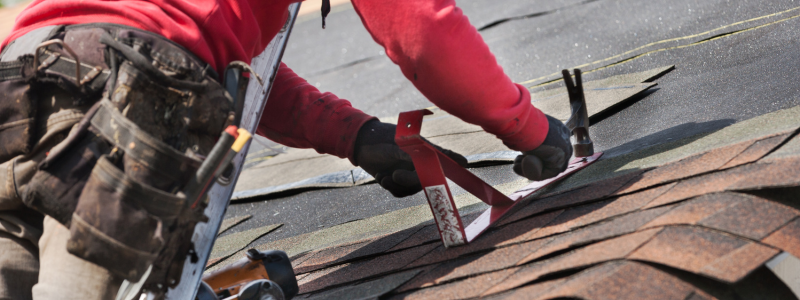
Get Started With B&M Roofing Services Today
Your roof is one of the most critical components of your home, protecting it from weather elements and maintaining its structural integrity. Awareness of common roofing problems and addressing them promptly can save you from costly repairs and ensure your home remains safe and secure.
Trust B&M Roofing to provide expert guidance, thorough inspections, and top-quality repair services. Contact us today to schedule an inspection and keep your roof in its best condition for years.
Metal Roof vs. Shingles
In the picturesque landscape of Denver, Colorado, where homes and businesses are often exposed to diverse weather conditions, the choice of roofing material becomes paramount. From scorching summer suns to unexpected hail storms, a roof must be resilient, durable, and efficient. Among the numerous roofing options available, two have consistently dominated discussions and considerations: metal roofs and asphalt shingles.
Metal roofs, with their sleek appearance and undeniable durability, have been a favorite for those looking for longevity and a modern touch to their property. On the other hand, asphalt shingles, with their classic appeal and cost-effectiveness, have been a staple in American homes for decades.
But how does one decide between the two? Is it merely a matter of aesthetics, or are there deeper factors at play? As we delve into the “Metal roof vs. shingles” debate, we aim to shed light on the pros and cons of each, offering homeowners and business owners in Denver a comprehensive guide to making an informed decision.

Pros of Metal Roofs: Are Metal Roofs Worth?
When considering the roofing options for your home or business it’s essential to weigh the advantages of each material. Metal roofs, in particular, have gained popularity for several compelling reasons:
- Durability: One of the most significant benefits of metal roofs is their exceptional durability. Unlike other materials, metal can withstand extreme weather conditions, from heavy snowfall to hail storms. This resilience ensures that your roof remains intact and functional for years to come. Metal roofs can offer a 10-25% reduction in cooling costs due to their ability to reflect the sun’s UV and infrared light rays.
- Energy Efficiency: Metal roofs are known for their energy-saving properties. Their reflective surfaces can deflect sunlight, reducing the amount of heat absorbed by your home. This means that during the hot summer months, your home remains cooler, leading to significant savings on air conditioning costs.
- Variety of Styles: Gone are the days when metal roofs were limited to a few designs. Today, they are available in a plethora of styles, colors, and finishes, allowing homeowners to choose a design that complements their property’s aesthetic.
- Eco-Friendly: Metal roofs are sustainable and environmentally friendly. Most metal roofing materials are made from recycled content, and once they reach the end of their lifespan, they can be recycled again, reducing landfill waste.
- Fire Resistance: Metal roofs are non-combustible, making them highly resistant to fire. This feature is especially beneficial in areas prone to wildfires, providing an added layer of protection to your property.
- Low Maintenance: Unlike other roofing materials that may require regular upkeep, metal roofs demand minimal maintenance. Occasional cleaning and inspection are generally all that’s needed to keep them in optimal condition.
Cons of Metal Roofs: Is A Metal Roof Cheaper Than Shingles?
When considering “Metal roof vs. shingles”, it’s essential to understand the potential drawbacks of metal roofing. While metal roofs offer numerous benefits, they also come with their own set of challenges:
- Initial Cost: Metal roofs tend to have a higher upfront cost compared to asphalt shingles. This can be a significant factor for homeowners and business owners working within tight budgets. However, it’s crucial to weigh this initial investment against the long-term savings and durability that metal roofs provide. Some sources highlight the affordability aspect, noting that metal roofs can be two or three times more expensive than other roofing materials.
- Noise: One common concern with metal roofs is the noise during heavy rain or hailstorms. The sound of raindrops or hail hitting the metal surface can be louder than on traditional shingle roofs. Proper insulation can mitigate this issue, but it’s a factor to consider, especially in areas prone to frequent rain.
- Potential for Denting: While metal roofs are durable, they can be susceptible to denting, especially in areas with frequent hailstorms. It’s essential to choose a high-quality metal roofing material to reduce the risk of denting.
- Expansion and Contraction: Metal roofs can expand and contract with temperature changes. Over time, this can lead to loosening of fasteners or other components, requiring additional maintenance.
- Specialized Installation: Installing a metal roof requires specialized skills and tools. It’s crucial to hire experienced professionals to ensure the roof is installed correctly, which can add to the overall cost.
- Aesthetic Concerns: Some homeowners prefer the traditional look of shingles over the more modern appearance of metal. While metal roofing comes in various styles and colors, it might not suit every architectural style.

Pros of Shingles
In the debate of “Metal roof vs. shingles”, asphalt shingles stand out for several reasons that appeal to homeowners and business owners alike. Here are the primary advantages of shingle roofs:
- Affordability: One of the most significant benefits of shingle roofs is their cost-effectiveness. Compared to metal roofs, asphalt shingles are generally more affordable, making them a popular choice for those on a budget.
- Ease of Installation: Shingle roofs are relatively straightforward to install. Their flexibility and lightweight nature mean that they can be fitted quickly, reducing labor costs and installation time.
- Variety of Colors and Styles: Asphalt shingles come in a wide range of colors and styles, allowing homeowners to choose a design that complements the aesthetic of their property. Whether you’re looking for a traditional or contemporary look, there’s likely a shingle style to match.
- Repairability: If a section of your shingle roof gets damaged, it’s often easier and less costly to repair or replace individual shingles than to fix a metal roof.
- Sound Insulation: Unlike metal roofs, shingle roofs tend to offer better sound insulation, ensuring that noise from rain or hail is less intrusive.
- Familiarity: Given their popularity, many roofing contractors are familiar with shingle installation and repair, ensuring that homeowners have a wide range of experts to choose from.
Cons of Shingles
When considering “Metal roof vs. shingles”, it’s essential to understand the potential drawbacks of shingle roofs. Here are some of the primary disadvantages:
- Shorter Lifespan: While shingle roofs are affordable, they typically have a shorter lifespan than metal roofs. On average, asphalt shingles last between 15 to 30 years, depending on the quality and maintenance. Some sources even claim that they can last for over 50 years.
- Maintenance Requirements: Shingle roofs require more frequent maintenance to ensure their longevity. This includes regular inspections for damage, cleaning to remove debris and algae, and replacing damaged shingles.
- Vulnerability to Extreme Weather: Shingles can be damaged by high winds, hail, and other extreme weather conditions. They are also more susceptible to algae and moss growth, which can affect their appearance and functionality.
- Environmental Concerns: Unlike metal roofs, which are often made from recycled materials and are recyclable at the end of their life, asphalt shingles contribute to landfill waste.
- Potential for Increased Insurance Premiums: Some insurance companies may increase premiums for homes with shingle roofs, especially in areas prone to severe weather conditions.
- Heat Absorption: Shingles, especially darker ones, can absorb heat, which can increase cooling costs during the summer months.
Lifespan and Durability
When comparing “Metal roof vs. shingles” in terms of lifespan and durability, it’s crucial to understand the longevity of each roofing material.
How Long Do Metal Roofs Last:
Metal roofs are renowned for their impressive durability and extended lifespan. Depending on the material and maintenance, metal roofs can last between 40 to 70 years. Their resilience is attributed to their ability to withstand extreme weather conditions, from high winds to hailstorms. Furthermore, metal roofs are fire-resistant, moisture-proof, and inaccessible to most pests, ensuring their longevity.
How Long Do Shingles Last:
While asphalt shingles are widely popular due to their affordability and ease of installation, their lifespan is typically shorter than metal roofs. On average, asphalt shingles can last between 12 to 20 years, depending on the quality, maintenance, and environmental factors. Factors such as extreme weather conditions, mold, mildew, and rot can affect the longevity of shingle roofs.

Final Recommendations
In the debate of “Metal roof vs. shingles”, both roofing materials present their unique advantages and challenges. Metal roofs are environmentally friendly, durable, and offer significant energy savings. On the other hand, shingles are widely recognized for their affordability, ease of installation, and versatility in design.
However, when considering the long-term benefits, metal roofs often come out ahead due to their extended lifespan, reduced maintenance needs, and energy efficiency. For homeowners and business owners in Denver, Colorado, it’s essential to weigh the initial costs against the long-term savings and benefits.
In conclusion, while shingles might be a suitable choice for those on a tight budget or with specific aesthetic preferences, metal roofs offer undeniable advantages in durability, lifespan, and eco-friendliness. If you’re contemplating a roofing project in Colorado, we recommend consulting with B&M Roofing. Our team of experts will provide guidance tailored to your specific needs, ensuring you make an informed decision for your residential or commercial property.
Winter Roof Maintenance Tips
Before winter arrives in full force, it is crucial to prioritize the maintenance and care of your roof. The cold weather, snow, and ice can pose significant challenges and potentially lead to serious roof damage if not properly addressed.
In the following paragraphs, we will provide essential tips for winter roof maintenance to help you prevent common roof problems, identify signs of leaks and damage, minimize ice dams, choose durable roofing materials, conduct thorough roof inspections, and maintain your gutters and downspouts. By implementing those tips, you can ensure the longevity and integrity of your roof throughout the winter season.
One of the key aspects of effective winter roof maintenance is conducting a thorough inspection before the cold weather sets in. This allows you to identify any existing issues and address them promptly. However, it is important to note that inspecting and maintaining your roof during winter can be challenging and dangerous, especially if you’re not experienced or equipped with the necessary tools and safety gear.
Contact the B&M Roofing professional team for your roof inspection. We have the expertise and equipment to perform simple and complex roof maintenance and replacement procedures.

Common Roof Problems in Winter
Winter weather can worsen existing roof problems and create new challenges. It is essential to be aware of common roof issues during this season to address them promptly. Some common problems include:
- Ice Dams: Ice dams form when snow on the roof melts, then refreezes at the roof’s edges, creating a barrier that prevents proper drainage. This can lead to water seeping under the shingles and causing leaks and damage.
- Roof Leaks: Cold temperatures, snow, and ice can cause roofing materials to contract, creating gaps and potential points of entry for water. Leaks can occur when ice or snow melts and finds its way into these vulnerable areas.
- Snow Load: Snow accumulation can put excessive weight on the roof, leading to stress and potential structural damage if the roof is not properly designed or maintained.
- Condensation: Temperature differences between the warm interior of your home and the cold exterior can create condensation in the attic. The moisture can lead to mold growth, compromising not only the integrity of the roof but also making the house interior an unpleasant space to live in.
Signs of Roof Leaks and Damage in Winter
Identifying signs of leaks and damage before winter is crucial to address issues promptly and prevent further deterioration. Look out for the following signs:
- Water Stains: Check the interior walls and ceilings for water stains or discoloration, as they often indicate a roof leak.
- Dripping or Water Pools: If you notice dripping water or pools of water in your attic or ceiling, it clearly indicates a roof leak.
- Icicles and Ice Buildup: While icicles may seem harmless, they can be a sign of poor insulation and the potential for ice dams to form.
- Damaged or Missing Shingles: Inspect your roof for any damaged or missing shingles. Strong winds and ice buildup can cause shingles to become loose or get dislodged.
- Sagging or Uneven Roof Surface: A sagging or uneven roof surface can indicate structural issues caused by snow load or other underlying problems.

Tips for Preventing and Minimizing Ice Dams on the Roof
Ice dams are a common winter problem that can lead to significant roof damage if not addressed promptly. The following tips can help you prevent and minimize ice dams.
Insulate Your Attic
Proper attic insulation helps maintain a consistent temperature and prevents heat from escaping, reducing the risk of ice dams. Ensure that your attic has sufficient insulation and seal any air leaks.
Ventilate Your Attic Regularly
Proper attic ventilation helps regulate temperature and reduces moisture buildup. It allows for the escape of warm air, preventing it from melting snow on the roof and contributing to ice dam formation.
Remove Snow
Safely remove snow from your roof using a roof rake or hire professionals to do the job. Clearing snow helps prevent its accumulation and minimizes the likelihood of ice dams forming.
Install Ice and Water Shield
Consider installing ice and water shield membranes along the eaves and valleys of your roof. This provides an additional layer of protection against water infiltration caused by ice dams.
How to Choose the Right Roofing Materials for Winter Durability
Choosing the right roofing materials is essential for ensuring durability and performance during the winter season. Consider the following factors when selecting roofing materials:
- Material Durability: Opt for materials known for their durability and resistance to extreme weather conditions. Asphalt shingles, metal roofs, and slate tiles are popular choices due to their ability to withstand harsh winters.
- Slope and Pitch: Consider the slope and pitch of your roof. Steeper roofs allow snow to slide off more easily, reducing the risk of excessive snow accumulation and potential damage.
- Insulation Properties: Some roofing materials offer better insulation properties than others. Insulated metal panels, for example, provide excellent thermal resistance, helping to maintain a consistent temperature inside your home.
- Get Professional Advice: Seek advice from roofing professionals who can assess your needs and recommend the most suitable roofing materials for your climate and budget.
Schedule an inspection by the B&M Roofing team to discuss ways to improve your roof and ensure its longevity and safety.
Roof Inspection and Maintenance Before Winter
Roofs take a beating from the weather, and that weather can be harsh in some states, like Colorado. Roofs are one of the most important parts of a home or building because they protect the structure from natural elements such as wind, rain, ice, snow, extreme heat, and hail, but they can be damaged by those elements over time. Before winter arrives, conducting a comprehensive roof inspection and performing necessary maintenance tasks is crucial.
Hire a Professional Roofing Contractor
Consider hiring a professional roofing contractor, such as B&M Roofing, to inspect your roof thoroughly. They have the training to do it safely and the expertise to identify potential issues and provide appropriate recommendations.
Check Flashing and Sealants
Inspect the flashing around chimneys, vents, and skylights for any signs of damage or deterioration. Ensure that all sealants are intact and in good condition.
Clean Gutters and Downspouts
Clear your gutters and downspouts of leaves, debris, and any blockages. Debris uncleared from your roof can clog gutters and cause damage to your property. When gutters are clogged, rain and melted snow cannot drain properly, leading to a buildup of standing water. This can cause interior leaks and shorten the lifespan of your roof. In addition, the extra weight of the debris and water can bend your gutters or tear them away from the roof.
Trim Overhanging Branches
Trim any overhanging tree branches near your roof to minimize the risk of damage from falling limbs and reduce the accumulation of leaves and debris.
Preventing Roof Collapses Due to Heavy Snow
In regions with heavy snowfall, the weight of accumulated snow can pose a risk of roof collapse. Take these precautions to prevent roof collapses:
- Ensure Proper Roof Design and Construction: When constructing or renovating your home, ensure that the roof is designed to handle the expected snow load in your area. Consult with professionals to determine the appropriate roof pitch and structural requirements.
- Remove Snow from the Roof: Safely remove accumulated snow from your roof using a roof rake or hire professionals to do the job. Regular snow removal helps alleviate the excess weight on your roof.
- Strengthen Structural Support: Consider reinforcing your roof’s structural support if you live in an area prone to heavy snowfall. Consult with a structural engineer or a professional roofing contractor, such as B&M Roofing, to assess and reinforce your roof if necessary.

Gutter and Downspout Maintenance
Proper gutters and downspouts maintenance is essential for effective water drainage and preventing ice dams. Follow these tips:
- Clean your gutters at least twice a year, before and after winter, to remove leaves, debris, and any blockages. Clogged gutters can lead to water backup and potential damage to your roof.
- Regularly inspect your gutters and downspouts for signs of damage, such as cracks or sagging. Address any issues promptly to ensure proper water flow.
- If you haven’t done this yet, consider installing gutter guards to prevent debris from accumulating in your gutters and minimize the need for frequent cleaning.
- Check your downspouts to ensure they are properly connected and direct water away from your house’s foundation. Consider adding extensions if necessary to ensure proper water drainage.
Winter Roof Maintenance Tips | B&M Roofing Colorado
Proper winter roof maintenance is crucial for protecting your home and ensuring the longevity of your roof. You can safeguard your roof during the cold season by preventing ice dams, choosing the right roofing materials, conducting thorough inspections, and maintaining your gutters and downspouts.
When it comes to roof inspection and maintenance, you can rely on the expertise of the B&M Roofing team for professional guidance and quality services.
With proper preparation and maintenance, your roof will withstand extreme weather, providing peace of mind and a comfortable living environment.
Roof Replacement by Professionals | B&M Roofing
B&M Roofing has extensive experience in residential and commercial roofing, with a Colorado company providing quality service throughout the Centennial State since 1947.
The premier Colorado commercial roofing contractor uses only the highest quality roofing shingle suppliers: GAF and Owens Corning. We offer a wide range of colors and styles to choose from, ensuring that we can match the right roof shingle color to any home’s style.
We work with brands like GAF and Owens Corning to offer you a variety of roofing materials and colors to choose from and allow you to find the perfect color for your home. B&M is always available to help give your home’s roof the beauty it deserves.
How To Tell If You Need A New Roof
A new roof is about more than just fixing the existing roofing system on your house. If you’ve never had a roofing system installed before, or if it’s been a while since your last roof was constructed, it can be difficult to know whether, or when, you need a new one.
In this article, we’ll explore how to tell if you need a new roof, some frequently asked questions, and how to get started on replacing yours.

How To Tell If You Need A New Roof: Lifespan
There are a number of factors that affect your roof’s lifespan, including the materials used, quality of materials, maintenance, location, and climate.
The material used in a roof can be an indicator of how long it will last. Over time, certain types of roofs become brittle and susceptible to damage from wind or rain; therefore they may need to be replaced sooner than other types.
How long does roofing usually last?
The life expectancy of your roofing material depends on several factors, including the quality of installation, climate, and quality of materials. In general, shingles last anywhere from 20 to 50 years. Metal roofs can have a lifespan as long as 80 years. The lifespan for asphalt roofs is usually between 15 and 30 years, depending on the type and quality of the product used.
The average lifespan for a single layer of felt roofing is about 20 years. For multiple layers, it’s between 30 and 40 years in most climates (except those with extreme temperatures). If you live in an area where there are frequent snowstorms or high winds then your felt may not last that long before needing replacement because these types of weather conditions cause extra wear and tear on it over time which will eventually shorten its lifespan considerably.
For example, slate roofs have been known to last anywhere from 100 years to 250 years depending on where they’re installed. On the other hand, steel roofs have had lifespans ranging from 20-50 years depending on their quality and maintenance practices (which means regular inspections). Asphalt shingles are generally considered to be one of the least costly options but also one of the least durable – lasting only 8-12 years before they need replacement because they tend not to withstand harsh weather conditions as well as other materials like clay or concrete tile.
Is your roof older than 20 years?
One of the most quickly identifiable ways to know if you need a new roof starts when you examine the age of the existing roofing system. When your roof is older than 20 years, it is time to consider a new roof.
As a general benchmark, roofs generally last between 20 and 25 years. If your house was built before 1997 or so and you haven’t replaced the roof yet, it’s probably time to consider having a new roofing system installed.
Unsure if you need a replacement? These two things can help you determine if it is the right time:
- Shingles that are curling up at the edges (especially if there are visible signs of cracking)
- Small holes in shingles

How To Tell If You Need A New Roof: Weather Damage
Water damage can be caused by several different factors. In Colorado, a storm can blow through town, causing rainwater to find its way into the attic or crawlspace under your home.
One way or another, if there’s moisture in places where it shouldn’t be (like inside of walls), then it could mean serious trouble for your roofing integrity as well as the structure of your home overall.
Are there new leaks or other signs of water damage in the house?
You can also tell if you need a new roof if you see new leaks or other signs of water damage in your house.
Heavy and recent storms can lead to needing a new roof. If you live in an area that is prone to severe weather, such as Colorado, you should inspect your roof after any storm. The best way to do this is to hire a professional roofing company that will inspect the roof for damage, but if you wish to inspect it yourself there are some things you should look for:
- Look for missing shingles or pieces of shingle that have been blown off
- Check for any splits or tears in the wood structure underneath that may be causing leaks
- Inspect vents and chimneys (if applicable)
Do you notice dark stains on your ceiling or walls from above your roofline?
Dark stains on your ceilings and walls are a sign of water damage. The stains indicate that there is an ongoing leak in the roofing system. As moisture gets into your home, it will cause mold to grow. Mold will leave dark stains on the ceiling or walls, which can lead to other problems such as allergic reactions and respiratory issues for occupants in your home.
If you notice these dark stains, it’s important to have them inspected by a professional roofer who can determine whether they’re caused by condensation or a leak in your roofing system.

How To Tell If You Need A New Roof: Craftsmanship Issues
Is the roof sagging, warped, curved, or bubbling?
If the roof is sagging, warped, curved, or bubbling, these symptoms are indicative of a damaged roof that needs to be fixed. Sagging is caused by missing nails, while warping is usually caused by age and moisture. Bubbling can occur in areas where there’s been an excessive amount of moisture for an extended period of time.
Is there visible deterioration in the nails holding down your shingles to the roof structure?
It may be difficult to tell if your nails are loose or missing without careful inspection. If you do notice that some are broken, the shingle will likely be falling off in pieces or become totally gone.
In this case, you have a need for a new roof!
Rusty shingles and nails can also indicate that it’s high time to call in a professional roofer. While rusty nails aren’t necessarily an indication of damage yet (they could just mean that they’re old), they should still be inspected by a professional because of how much water comes into contact with them as part of your home’s plumbing system.
Are any of the shingles cracked, curled up, or broken?
If you find that any of the shingles are cracked, curled up, or broken, this is a sign that something is wrong with your roof. If you don’t replace these damaged shingles ASAP, they will start leaking and cause additional damage to your home.
FAQ: How To Tell If You Need A New Roof
How do you know when it’s time to change your roof?
Recognizing the signs of an aging or damaged roof is crucial. Look for indicators such as missing or curled shingles, frequent leaks, granules in the gutters, sagging roof valleys, and daylight coming through the roof boards. If you notice any of these signs, it might be time to consider a roof replacement.
What is the life expectancy of a roof?
The life expectancy of a roof largely depends on the material used. Asphalt shingle roofs typically last 20 to 25 years, while wooden shingles can last 30 to 40 years. Metal roofs have a lifespan of 40 to 70 years, and slate, copper, and tile roofs can last over 50 years. However, factors like climate, maintenance, and installation quality can influence a roof’s longevity.
How often should I replace the roof of my house?
The frequency of roof replacement depends on the roofing material, environmental conditions, and how well the roof has been maintained. On average, homeowners might need to replace their asphalt shingle roofs every 20 to 25 years. However, with regular inspections and timely repairs, some roofs can last longer. It’s always a good idea to consult with a roofing professional if you’re unsure about the condition of your roof.
How do you know if your roof is in bad shape?
Several signs can indicate a roof in poor condition. These include:
- Missing, broken, or curled shingles
- A large amount of shingle granules in the gutters
- Leaks or water stains on the ceiling or walls
- Sagging areas on the roof
- Moss or algae growth
- Rusted or damaged flashing
- Daylight visible through the roof boards
If you observe any of these signs, it’s advisable to get a professional roof inspection to determine the extent of the damage and the best course of action.
Get A Professional Opinion To Tell If You Need A New Roof
As dedicated roof experts, B&M Roofing offers expert services and care for commercial and residential projects across Colorado and nearby states. Whether you are looking for a new roof for your home or your office, or if you’re needing roof repair, we come equipped with extensive knowledge and comprehensive industry experience.
Our specialties include sheet metal roofs, commercial roofs, and residential maintenance and support. A team of highly trained and professional experts can provide a FREE estimate for any project.
Contact us today to learn more at (303) 443-5843.
Take a look at some of our past work so that you know how much quality workmanship goes into every job we complete.


